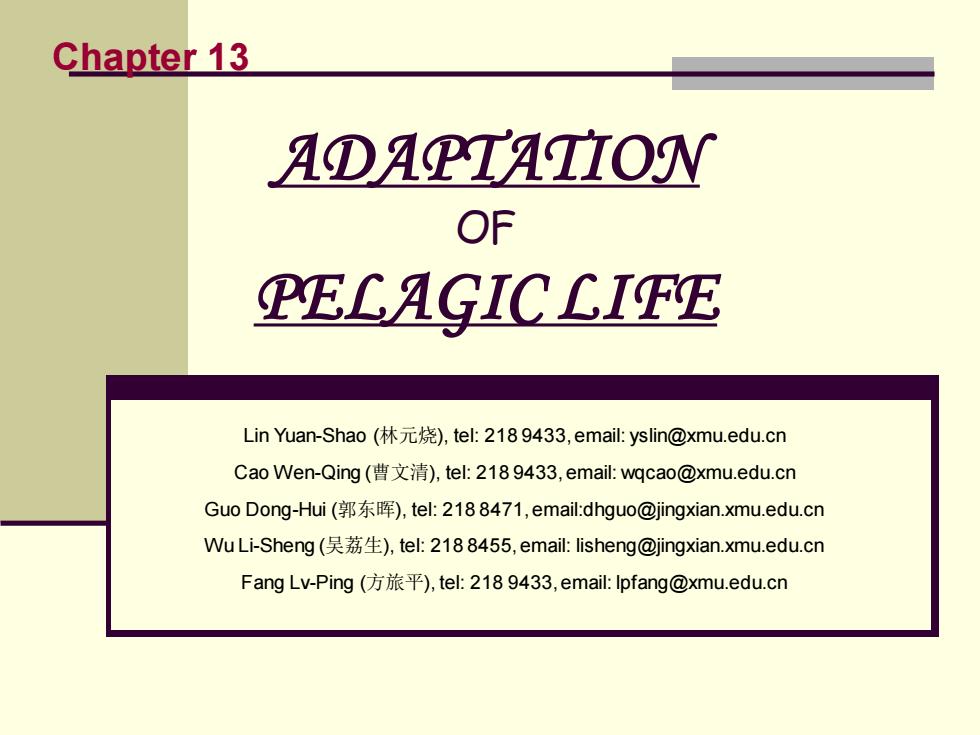
ADAPTATION OF PELAGIC LIFE Lin Yuan-Shao (林元烧), tel: 218 9433, email: yslin@xmu.edu.cn Cao Wen-Qing (曹文清), tel: 218 9433, email: wqcao@xmu.edu.cn Guo Dong-Hui (郭东晖), tel: 218 8471, email:dhguo@jingxian.xmu.edu.cn Wu Li-Sheng (吴荔生), tel: 218 8455, email: lisheng@jingxian.xmu.edu.cn Fang Lv-Ping (方旅平), tel: 218 9433, email: lpfang@xmu.edu.cn Chapter 13
ADAPTATION OF PELAGIC LIFE Lin Yuan-Shao (林元烧), tel: 218 9433, email: yslin@xmu.edu.cn Cao Wen-Qing (曹文清), tel: 218 9433, email: wqcao@xmu.edu.cn Guo Dong-Hui (郭东晖), tel: 218 8471, email:dhguo@jingxian.xmu.edu.cn Wu Li-Sheng (吴荔生), tel: 218 8455, email: lisheng@jingxian.xmu.edu.cn Fang Lv-Ping (方旅平), tel: 218 9433, email: lpfang@xmu.edu.cn Chapter 13
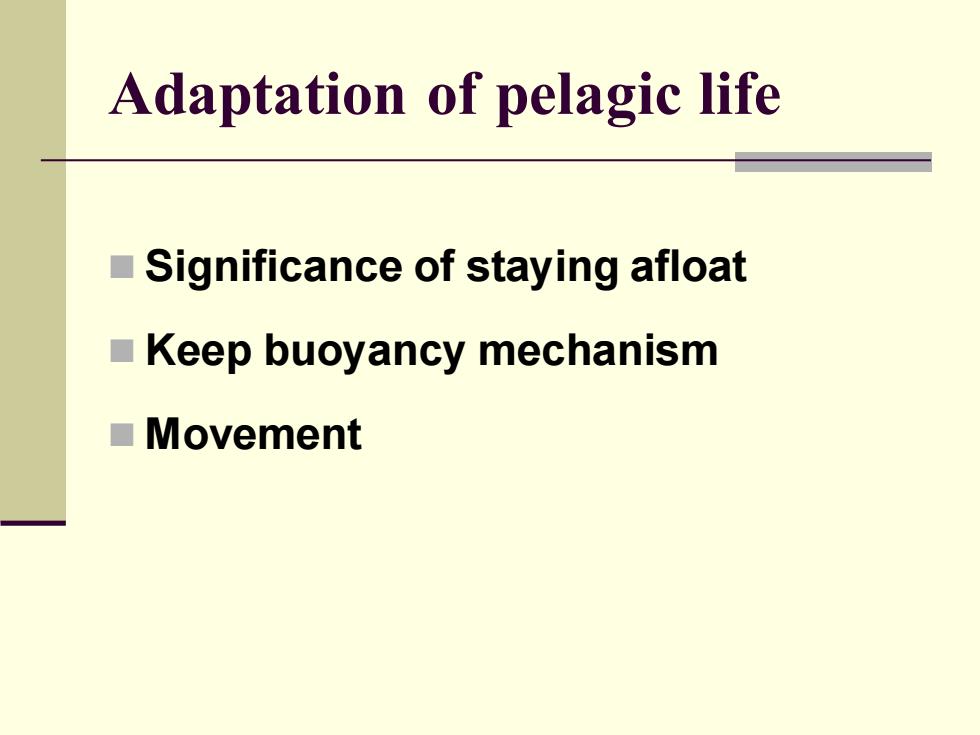
Adaptation of pelagic life ◼ Significance of staying afloat ◼ Keep buoyancy mechanism ◼ Movement
Adaptation of pelagic life ◼ Significance of staying afloat ◼ Keep buoyancy mechanism ◼ Movement
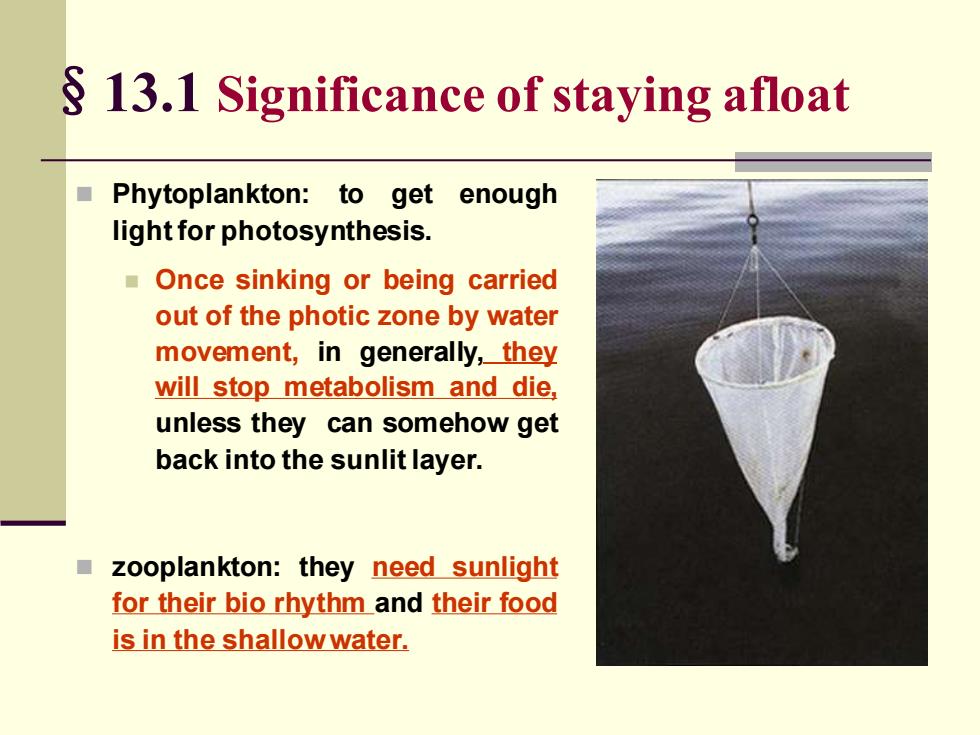
§13.1 Significance of staying afloat ◼ Phytoplankton: to get enough light for photosynthesis. ◼ Once sinking or being carried out of the photic zone by water movement, in generally, they will stop metabolism and die, unless they can somehow get back into the sunlit layer. ◼ zooplankton: they need sunlight for their bio rhythm and their food is in the shallowwater
§13.1 Significance of staying afloat ◼ Phytoplankton: to get enough light for photosynthesis. ◼ Once sinking or being carried out of the photic zone by water movement, in generally, they will stop metabolism and die, unless they can somehow get back into the sunlit layer. ◼ zooplankton: they need sunlight for their bio rhythm and their food is in the shallowwater

Staying afloat ◼ To live in the water layers, organisms must stay in the epipelagic. All epipelagic organisms face a fundamental problem——cells and tissue are denser than water
Staying afloat ◼ To live in the water layers, organisms must stay in the epipelagic. All epipelagic organisms face a fundamental problem——cells and tissue are denser than water
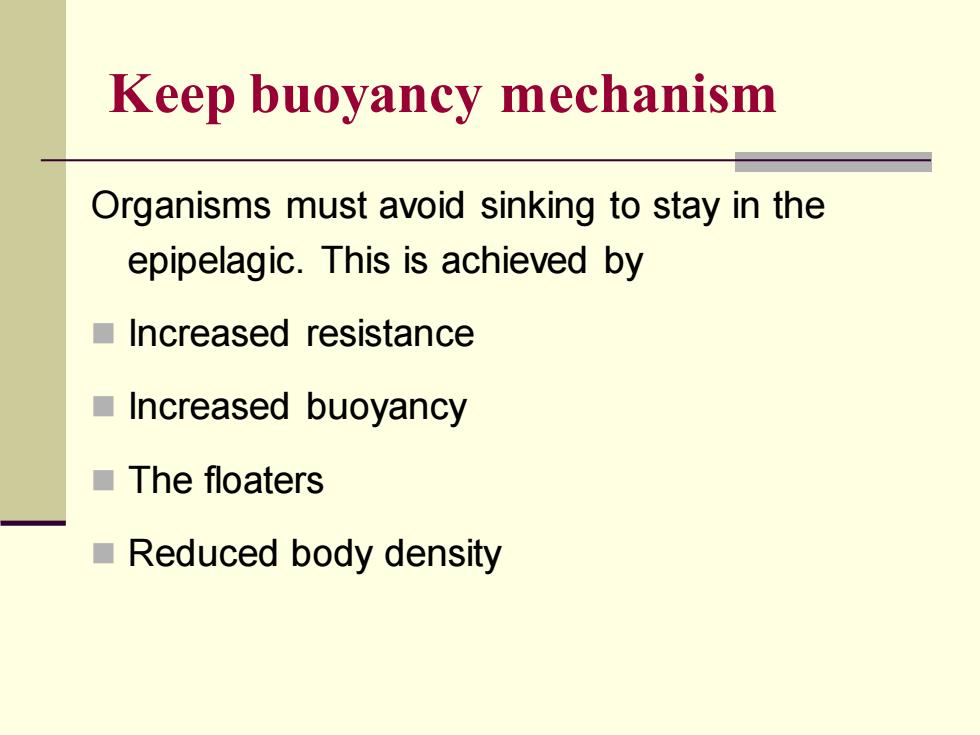
Keep buoyancy mechanism Organisms must avoid sinking to stay in the epipelagic. This is achieved by ◼ Increased resistance ◼ Increased buoyancy ◼ The floaters ◼ Reduced body density
Keep buoyancy mechanism Organisms must avoid sinking to stay in the epipelagic. This is achieved by ◼ Increased resistance ◼ Increased buoyancy ◼ The floaters ◼ Reduced body density
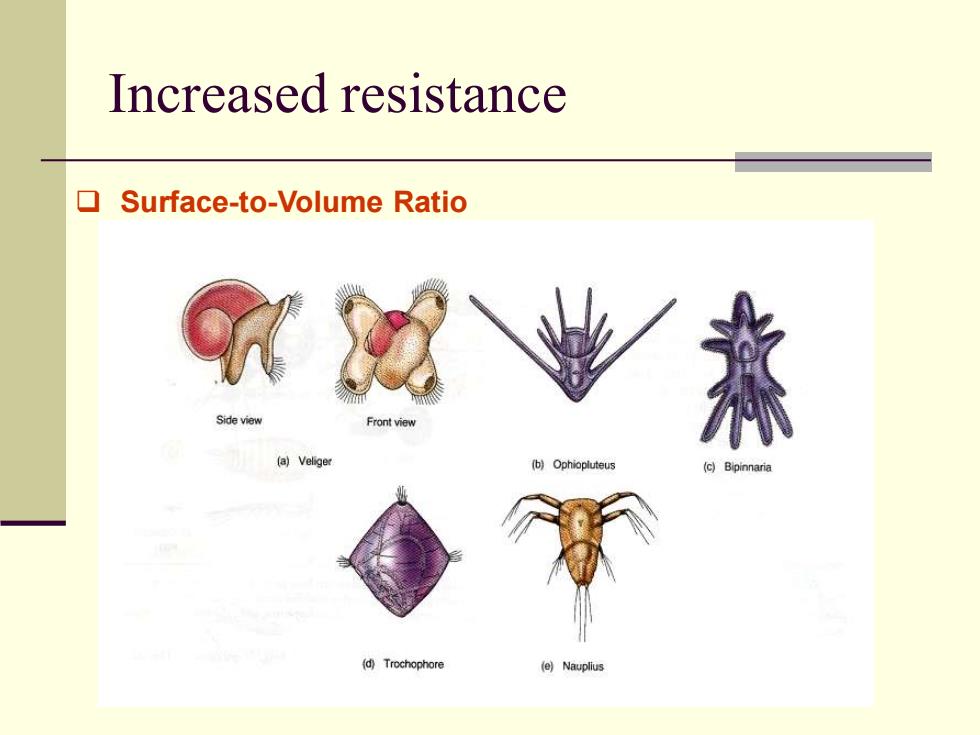
Increased resistance ❑ Surface-to-Volume Ratio
Increased resistance ❑ Surface-to-Volume Ratio
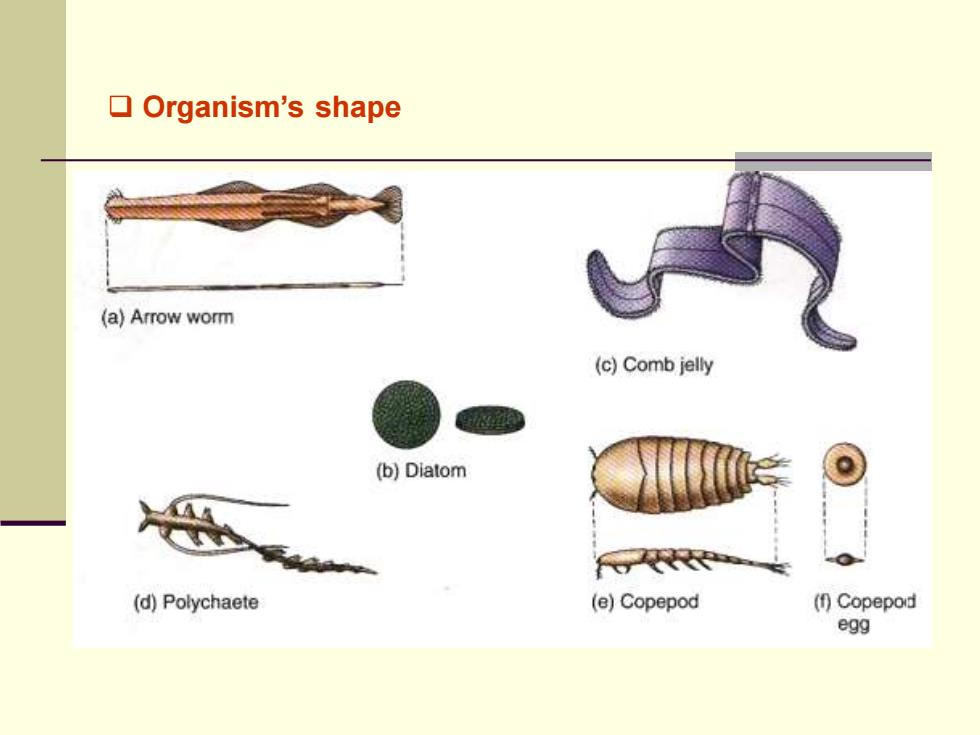
❑ Organism’s shape
❑ Organism’s shape
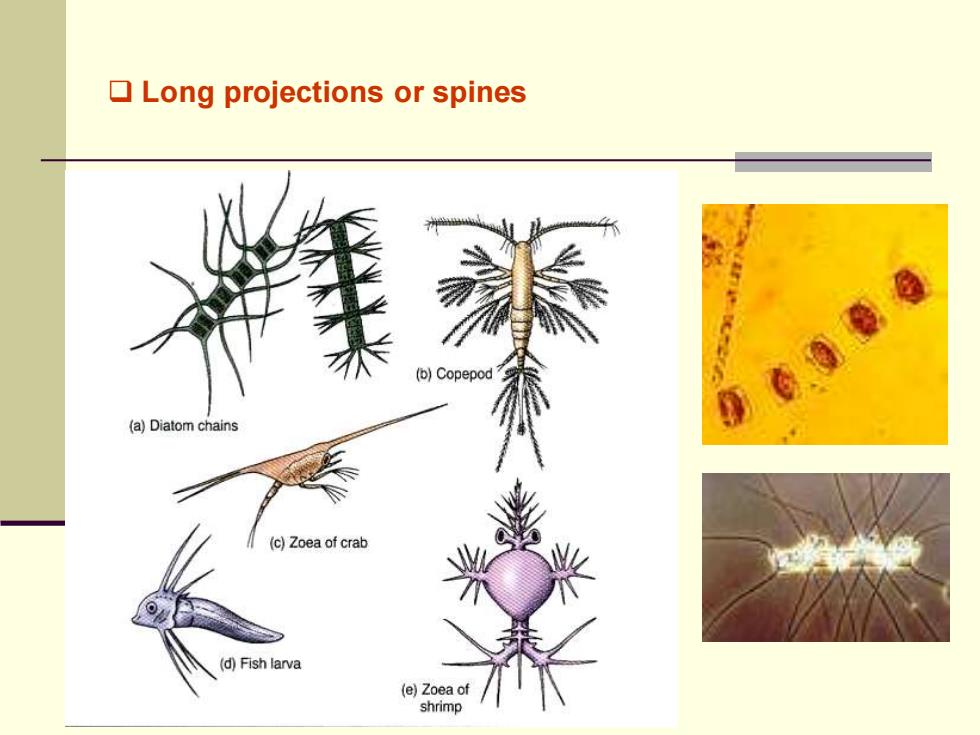
❑ Long projections or spines
❑ Long projections or spines

§13.2 Increased buoyancy ◼ The second way that epipelagic organisms can stay near the surface is to have special adaptations that make them more buoyant. Unlike adaptations that help the organism resist sinking, buoyancy reduces the tendency to sink
§13.2 Increased buoyancy ◼ The second way that epipelagic organisms can stay near the surface is to have special adaptations that make them more buoyant. Unlike adaptations that help the organism resist sinking, buoyancy reduces the tendency to sink

❑ Store lipids, such as oils or fats Calanus with oil sac
❑ Store lipids, such as oils or fats Calanus with oil sac